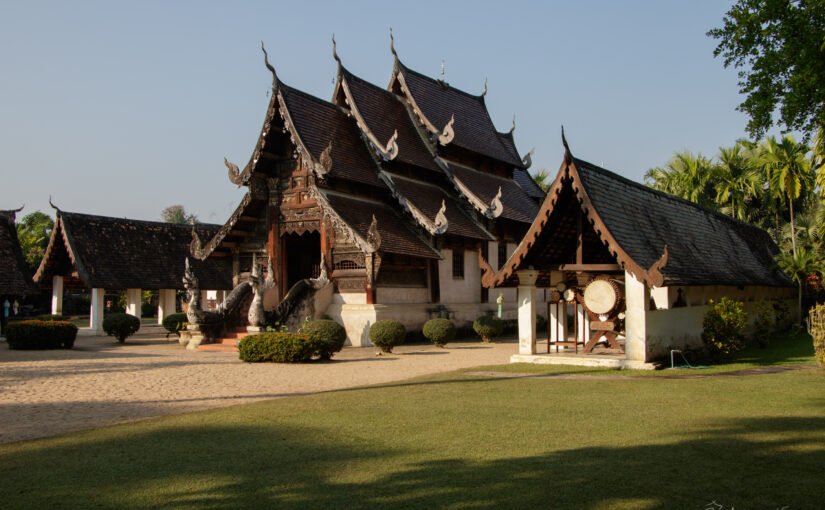This is my favorite temple, if not in all of Thailand, at least in the north. I sometimes come here to meditate despite the fact that it is almost half an hour from home. There is a lot of natural here: a yard covered with sand (and not covered with tiles or, God forbid, with concrete), a lot of wood, fresh rural air. And most importantly – almost deserted despite the fact that this complex is quite famous among Thais. There are no special Buddhist shrines and relics here; rather, it is valued as an ideal and integral example of the classical northern “Lannic” architecture, which has been preserved almost unchanged. Its popularity has especially grown recently, when it has become shooted TV shows in its “natural scenery” (in particular, scenes of the popular TV series Klin Kasalong/กลิ่นกาสะลอง were filmed here). Once we caught the shooting fuss there.
As for Western tourists, I even read in one guidebook that it is worth visiting only if you are going to a nearby botanical garden or on a “night safari”.
And in vain, because, it seems to me that this is just an ideal temple for a European. Because this is the rarest case of a completely “clean” space, not cluttered with a bunch of variegated buildings, tasteless modern figurines, posters, advertising, electrical wires. That is, all this Asian chaos, so unacceptable and annoying for a European who is accustomed to Western sterility and carefully thought-out “museum” of historical sights. I see how much this quality of local life prevents Westerners from perceiving the true value and beauty of local culture.
Tom Quen has none of that. Either because it is relatively out of the way, or because of the aforementioned lack of especially valuable relics, or to preserve the film scenery. Or because it is under the care of the Fine Arts Department of Thailand. But the main thing is that here it would be easiest for a European to taste the real Lann culture without interference.
It is not easy for a foreign tourist to find it, even knowing about it: I have met at least three English spellings of the name – Ton Kwen, Ton Khwen and Ton Kaen, and there is also a second name – Intharawat (or Intrawat). The era of globalization has simplified the problem a little: Google maps are now used by the majority, and there it is called the way I have it in the title.
Brick plinth and walls, half-timbered construction (wooden supporting columns, the space between which is filled with plastered bricks), rich carvings of the wooden facade, decorated with interspersed glass and metal, carved architraves in the form of nagas on the ends of all three slopes of the tiled roof, a strict gallery around the temple – all classic and well made. A tiny restored fragment remained from the murals, so the walls are just white. A very austere altar without excessive heaping of assorted figures and ornaments. And, as I said, the mat on the floor!
The temple was built in 1858. By European standards – a very funny age. According to Thai, for semi-wooden buildings, taking into account the climate and love, constantly updating and decorating old buildings is solid.
There are many pictures, but in this example you can see how the classical northern temple is structurally arranged and decorated.
